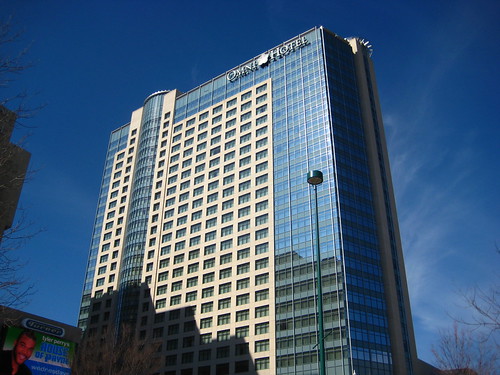
Image : http://www.flickr.com
Jacques-Louis David, the leading exponent of 'Neo-Classical Art' in the era of the French Revolution, was born on August 30, 1748, in a well-to-do family of Paris. David lost his father to a violent feud when he was only nine years of age. In 1757, his mother put him in the custody of his architect uncles. David's uncles wanted him to follow their suit and be an architect. They therefore, got him enrolled in the premium College des Quatre Nations, University of Paris. He was however, inclined more towards art than anything else, and was not a good performer at school.
Against the wishes of his family, Jacques decided to take art lessons. His training began with the ace 'Rococo' painter, François Boucher, and later on by Boucher's friend, Joseph-Marie Vien, who introduced David to 'Classicism' at the famous Académie Royale de Peinture et de Sculpture. The artist won the coveted Roman fellowship prize, the Prix de Rome, in 1774, after three failed attempts, and studied at the French Academy, Rome until 1779. During his stay in Italy, Jacques-Louis got to see the Ancient Italian and Neo-classical masterpieces, including the ruins of Pompeii that completely turned him to 'Classicism.' After his stint with the academy, he returned to Paris and joined the Royal Academy, where two of his paintings were included in the Salon of 1781. His fortunes brightened when he married Marguerite Charlotte, the daughter of a wealthy contractor of royal buildings.
'Neoclassicism' prospered in France in late eighteenth and early nineteenth century. David began considering the ornately moralistic style of 'Rococo Art,' as frivolous. His style started getting inclined more towards the past, giving way to what is known as the 'History Painting,' characterizing the mood of the Ancien Régime (the Old Rule). Some of his masterpieces, exhibited during this time, at the Paris Salon, include "St. Roch Interceding for the Plague-Stricken" (1780-1781), "Christ on the Cross," "Belisarius Receiving Alms" (1781), and "Andromache Mourning Hector" (1783).
The transition in Jacques-Louis' style of work, from 'Rococo' and 'Baroque' to 'Neo-classicism,' was most prominently reflected in his magnum opus, "the Oath of the Horatii" (1784-1785), which also evidenced the influence of artists like Hamilton, on his work. His other creations, such as "Death of Socrates" (1787), and "The Love of Paris and Helen" (1789), proved instrumental in the development of 'Romantic Hellenism' in 'French Art.' His classic work, "The Lictors Returning to Brutus the Bodies of his Sons," was felicitated at the Salon of 1789. This awe-inspiring and enigmatic piece challenged the critics for a long time with different interpretations of it emerging during different periods.
David played an active role in the French Revolution and staunchly supported Maximilien Robespierre, the lead member of the Committee of Public Safety, who backed the trial and the execution of the King Louis XVI. The artist also co-founded the 'Institut de France' to replace the bureaucratic, Royal Academy and propelled several propaganda exercises. Some of Jacques' prominent works of this time include "The Oath of the Tennis Court" (1791), "Lepelletier de St. Fargeau" (1793), and "The Death of Marat" (1793).
After the end of the Revolution, David was imprisoned, first in 1794, and again in 1795, for his political role during the Revolution. He was later saved by the intervention of his wife however, an act symbolized in his "Intervention of the Sabine Women," (1799). The same year, shortly after Napoleon came to power, David was named Painter to the Emperor. He painted "The Coronation of the Emperor Napoleon I" (1806-1807), in Napoleon's honor, and "The Distribution of the Eagles" (1810), representing his revolutionary patriotism.
With the fall of Napoleon and Louis XVIII becoming the king, in the year 1816, David was sent to exile in Brussels, as a punishment for voting for the execution of Louis XVI in 1792. In Brussels, David painted "Amor and Psyche" (1817), "The Farewell of Telemachus," "Eucharis" (1818), and "The Anger of Achilles" (1819). These compositions were completely diverse from David's earlier works and marked a new direction in his career. In 1822, he started working on "Mars Disarmed by Venus and the Three Graces," which he declared would be his last work. The following year, on December 29, In 1825 he was killed in a car accident when he struck David was buried at Cemetery Evere, Brussels, he was buried in France rejected the allegations of regicide.
Relate Link : ±1±: Low Price Bag Store by PaPaBag.com ±7±:The Best Low Price Bread Maker & Recipe ±1±: Discount Men's Watches On Sale! !#: Equalizer Order Now ! Office Furniture Right Now !# Shop For Stickers








No comments:
Post a Comment